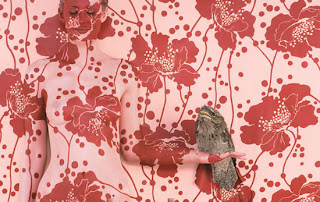As part of our weekly art history sessions, Jo is focussing on things that are in the news. This week it was the Chinese artist Lee Bolin who (with the help of a team of painters) creates works which involve him being painted so that he disappears into the background of his location.
The paint process is meticulous and skilful, and it is hard to see where the figure sits among the real landscape setting. His work was featured in yesterday's Guardian. Here's the link
http://www.guardian.co.uk/artanddesign/gallery/2010/feb/17/liu-bolin-art-invisible-man#/?picture=359393340&index=9
He started making pieces of this kind as a protest against the Chinese Government's demolition of various historic buildings, but hos work now suggests a wider commentary on freedom of speech and expression in China, especially for artists like Ai Wei Wei - do you have to blend into the generality? Or can you skilfully hide among the masses while retaining your unique identity, albeit disguised and invisible?
We also referred to the Australian artist Emma Hack, who does similar work related to wallpaper and interior decoration, in collaboration with Florence Bradhurst.
This too was mentioned in the Observer piece. Web link is here http://www.emmahackartist.com/wallpaper.php
We also looked at the current exhibition as part of the London Design Festival of work by Am Song, whose huge piece, RedDress invites the viewer to become part of the work, and is some sort of comment on the fashion industry with an enormous red woollen dress spread out on the floor in a huge sports hall.
I'm not sure I get the point of this one, although technically it is very impressive and must have been a nightmare to construct.
In both these instances, though, I am left wondering who is the artist: is it the technicians and painters and sewing experts who did the hard work, or the artist who conceived of the idea and who gets the fame?







No comments:
Post a Comment